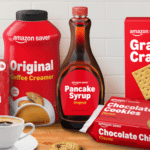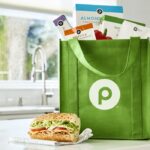
When money is tight and you have a choice between a full-priced national brand that isn’t on sale and doesn’t have any coupons available, and a store brand that looks just as good at a fraction of the price, what are you going to do? What do you think most people will do?
According to a new report, it seems most people are voting with their wallets and leaving the name brands on the shelf. And a separate report is warning brands that they may need to get serious about offering more coupons and promotions if they want to win those straying shoppers back.
The Private Label Manufacturers Association reports that once again, sales of store-brand products are soaring. Its newly-released 2024 Private Label Report found that sales of store brands increased $10.1 billion to a record $236.3 billion last year. That’s partly due to inflation – sales increased because prices increased – but dollar sales of national brands increased at a slower pace than that of store brands. Altogether, store brands represented about one in five of all grocery products purchased and grocery dollars spent.
“The results show that today’s consumers are directing more of their budgets to private label items,” the PLMA report noted, in calling store brands “the brightest light in grocery.”
The grocery departments with the highest rates of private label dollar sales growth were beauty and general food, both up 10%, followed by beverages, home care and frozen food. More specifically, store-brand refrigerated meat products, eggs, frozen seafood and refrigerated side dishes led in edible categories, capturing more than half of all grocery purchases. In nonedible categories, store-brand disposable tableware, cups and plates, and candles represented more than half of all purchases. Overall, the report found that there were private label options available for nearly every type of product in the grocery store – some 96% of all nonfood items have store-brand alternatives, along with 98% of food items.
With shoppers increasingly seeking out savings at the grocery store, store brands are an increasingly appealing option. Many are questioning whether they’re willing to pay more for national brands anymore. “Consumers are becoming loyal to being disloyal,” the consumer intelligence firm NIQ suggests.
So national brands need to make their products more appealing, by offering more deals, NIQ says. “Many grocery products just don’t make the cut when consumers need to decide between necessities and nice-to-haves,” NIQ explains. “This means many grocery brands need to reevaluate their pricing and promotion strategies to better align with consumer needs and avoid getting left on the shelf.”
NIQ found that promotional sales are on the rise across categories. Nearly a third of dry grocery items last year were purchased on some kind of deal, up 14% from the year before. In the frozen department, more than a quarter of sales were on deal, up a noteworthy 22%.
“Grocery brands need to work even harder to compete with private label growth,” NIQ advises. And promotions – in the form of in-store sales, coupons and other discounts – can help.
But so can justifying name brands’ higher prices. “To stay relevant with these shifting consumers, more premium grocery brands may need to do a better job of conveying the true value of their products and position them as purchases worth the extra expense,” NIQ suggests. “This may be due to the quality of the product, its innovative nature, or some other differentiator.”
But the PLMA is confident that store brands are earning a permanent place in more of our shopping carts, based in part on the emerging preferences of the younger generation. It surveyed Gen Z shoppers and found that more than half said they “always” or “frequently” choose a place to shop due to its store brands, two-thirds buy store brands “always” or “frequently,” and more than half are “likely” or “extremely likely” to try store brands as they seek out the best values.
“The industry is healthier than ever,” the PLMA concluded, saying “the future looks bright with American consumers’ continuing affinity for store brands.” And as long as prices remain elevated and budgets are tight, if store brands can beat national brands on price, then value-seeking shoppers are likely to keep going where the value is.
Image source: Albertsons










